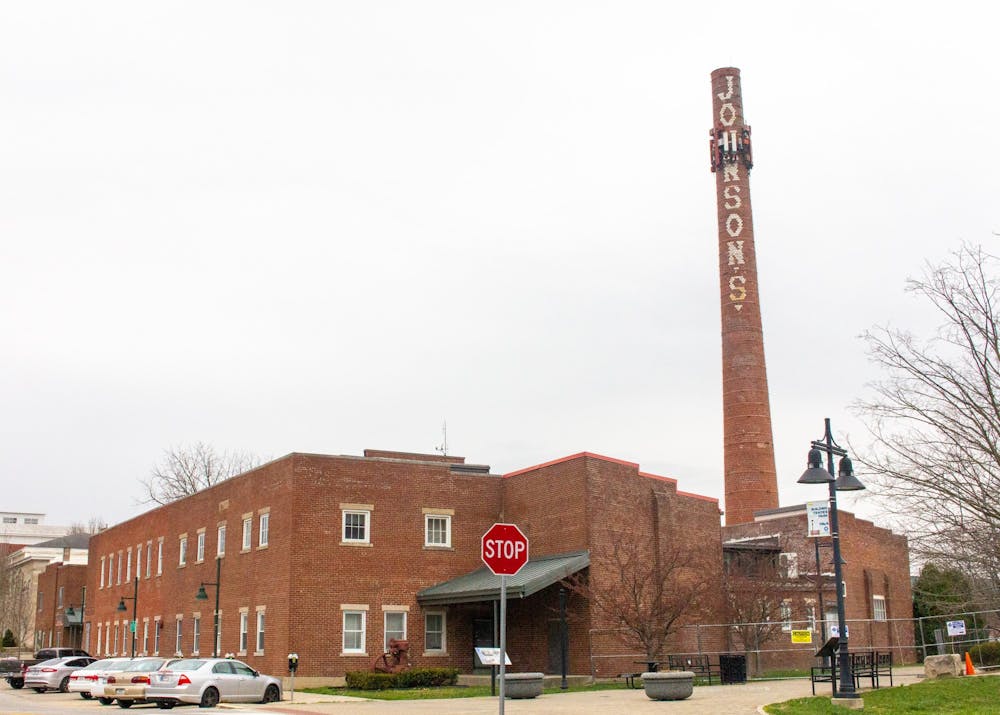One week ago — in its first in-person meeting in months — the Bloomington City Council had the opportunity to fast-track the process of creating a historic district around the Johnson Creamery building.
To do that, every single council member would’ve needed to agree to accelerate the process. From the outside of the council chamber — looking at the city’s discussions surrounding the issue — it seemed as if the council might have been ready to take that unusual step. But inside of the chamber, it quickly became clear unanimity could not be achieved: six of the council’s nine members wanted to use the normal, long process to consider the legislation.
That opposition set up the council’s meeting Wednesday, in which a majority of council members indicated the building should be placed on the city’s list of historic districts. A final vote will be taken next week, and with at least six members of the council supporting the legislation, it looks likely to pass.
However, questions still remain as to how much of the Johnson Creamery property would be included in the district.
Related: [Johnson Creamery smokestack could be unrepairable after city deems it unsafe]
The main focus of the Johnson Creamery building is its 140-foot-tall smokestack, which has defined the city’s skyline since its construction in 1949. The smokestack was added to the National Register of Historic Places in 1996. In recent months, the smokestack’s safety has been called into question.
Bloomington’s Housing and Neighborhood Development Department deemed it unsafe Jan. 13, according to a city press release. In the release, HAND ordered the smokestack be repaired within 60 days. A March 11 press release from HAND modified the original order to mandate the smokestack be shortened down to only 60 feet tall. The owners were given another 60 days to comply.
The smokestack also borders the B-Line Trail, a 3.1-mile walking and biking path extending from Adams Street to Country Club Drive. For precautionary reasons related to the smokestack’s safety, the city shut down a section of that trail.
Peerless Development purchased the Johnson Creamery building — including the smokestack — in 2019. The company is planning to build an apartment complex with 77 bedrooms that would be located just north of the proposed historic district, according to city documents.
“Part of the draw (to buying the property) was the iconic nature of the smokestack and the structure,” Peerless Founder and Principal Michael Cordaro said.
Despite the draw of the smokestack when it purchased the property, the situation with its safety changed in 2020, Cordaro said.
“The smokestack just continues to deteriorate and has moved beyond a repairable state,” he said.
The Bloomington Historic Preservation Commission said in a March 10 meeting that the building meets the standard to become a historic district. Historic districts require an additional review from the BHPC before making changes to its structure, BHPC Program Manager Gloria M. Colom Braña said in an interview with the Indiana Daily Student.
Related: [City of Bloomington will begin Bicentennial Tree Planting Project in April]
During that March 10 meeting, a member of the public compared the smokestack in Bloomington to the famous Gateway Arch in St. Louis. Cordaro, however, said the Gateway Arch is publicly owned, while the Johnson creamery’s smokestack is not.
Cordaro also said the smokestack is a liability for the company.
“I just want to say we’d be happy to sell it to the city of Bloomington for $1,” Cordaro said to the BHPC on March 10.
Highlighting Wednesday’s meeting was a request from Peerless to slightly amend the proposed historic district, so it would not interfere with the future development plans on the site, such as the apartment complex.
Councilmember Isabel Piedmont-Smith sponsored an amendment adhering to Peerless’s request, but it also went farther. Her amendment altered the boundary of the district to not include the smokestack, which would essentially leave the 140-foot tall structure unprotected from a site review if Peerless wished to take it down in its entirety.
“Since we cannot, due to engineering and building standards, maintain the smokestack at its original height, it has to be reduced by more than half (of its original height),” Piedmont-Smith said Wednesday. “I don’t see any point in keeping it.”
Piedmont-Smith’s amendment didn’t receive positive feedback from the community or members of the BHPC. Duncan Campbell, an adviser to the BHPC, said Piedmont-Smith’s proposed boundary would give the property owner too much leeway with the old structure.
“Theoretically, you could build a building literally within an inch of the Johnson Creamery, building up over it as high as you wanted to go without any oversight,” Campbell said.
HAND staff also opposed the amendment, and the council declined to adopt it by a 4-2 vote.
Related: [U.S. Census Bureau findings show Indiana faces a significant decline in population growth]
That leaves the council’s legislation moving forward with the original boundary lines for the proposed historic district, which includes the smokestack and a piece of the parking lot on the property site. However, there is no guarantee that the boundary line won’t change. The council will take a full vote on the legislation next Wednesday, and it could — with majority support — adopt a new boundary line for the historic district.
Another crucial factor to Wednesday’s meeting was the absence of Councilmembers Steve Volan, Kate Rosenbarger and Matt Flaherty. If all three return next Wednesday, they could all conceivably join Piedmont-Smith’s amendment, giving it the five-vote majority needed to be adopted. However, it is unknown how the three would have voted on Piedmont-Smith’s amendment had they been present Wednesday.
Councilmember Susan Sandberg ended her comments Wednesday by addressing Peerless’s development plans.
“We respect the old. We respect the new as it comes in,” she said. “We can live together harmoniously.”




